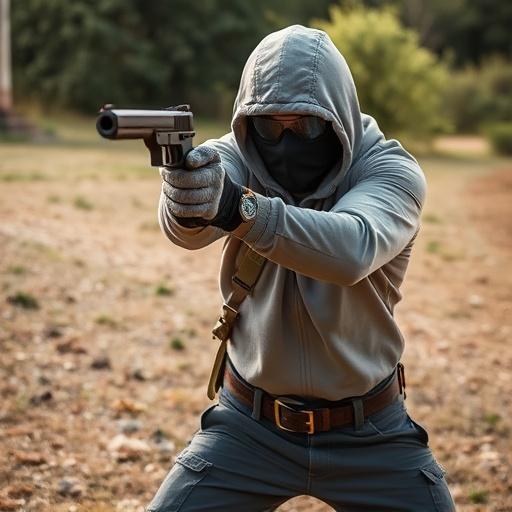Riot control pepper spray dispenser units balance non-lethal force with legal restrictions, using 1.5%–2.0% capsaicin. Modern technology enhances accuracy and reliability in crowd management. Global regulations set strongest legal pepper spray concentration limits (0.5%-2%) for public safety. Units are designed for precise deployment, with advanced triggering and nozzle placement to target disruptors while minimizing bystander exposure. Training and safety protocols strictly regulate use of capsaicin units (CU) in law enforcement.
“Discover the powerful tool that is the riot control pepper spray dispenser unit, a game-changer in crowd control and law enforcement. This comprehensive guide explores the advanced technology behind these devices, from understanding the science of pepper spray to navigating legal restrictions on concentration levels—the strongest legal pepper spray concentration being a key focus. We delve into the design and effectiveness of dispensers, as well as essential training and safety protocols for responsible use.”
- Understanding Riot Control Pepper Spray Technology
- Legal Considerations and Strength Restrictions
- Dispenser Design and Effectiveness
- Training and Safety Protocols for Pepper Spray Use
Understanding Riot Control Pepper Spray Technology
Riot control pepper spray dispenser units are designed to address civil unrest and crowd management situations, where non-lethal force is required to restore order. Understanding the technology behind these devices involves grasping the active ingredient: capsaicin, which is the main component in pepper spray. The strongest legal pepper spray concentration typically varies between 1.5% and 2.0%, ensuring its effectiveness while adhering to legal restrictions. This concentration is achieved through precise formulations that allow for optimal visibility, causing irritancy without causing severe harm.
These dispenser units are engineered to deliver the pepper spray in a controlled manner, maximizing impact while minimizing collateral damage. Modern technology includes advanced trigger mechanisms and precision nozzles that project the spray with accuracy, ensuring it reaches the intended targets. The effectiveness of riot control pepper spray relies not just on concentration but also on the quality of the manufacturing process, ensuring consistency and reliability in high-stress situations.
Legal Considerations and Strength Restrictions
When it comes to riot control pepper spray dispenser units, legal considerations and strength restrictions play a vital role in their effectiveness and usage. Each jurisdiction has its own regulations regarding the permitted concentrations of capsaicin, the active ingredient in pepper spray, ensuring public safety and minimizing harm.
The strongest legal pepper spray concentration varies across regions, with some allowing up to 2% capsaicin, while others restrict it to as low as 0.5%. These restrictions are based on factors such as potential risks to bystanders, the nature of the intended use, and the specific needs of law enforcement agencies. It’s crucial for users to understand these legal limits to ensure compliance and maximize the unit’s effectiveness during critical situations.
Dispenser Design and Effectiveness
The design of a riot control pepper spray dispenser unit plays a crucial role in its effectiveness. Modern units are engineered to ensure precise and controlled deployment, minimizing off-target effects and maximizing the impact on disruptors. The strongest legal pepper spray concentration, typically measured in parts per million (ppm), is often concentrated between 10% to 25%. This high concentration ensures that a targeted release of the spray can quickly incapacitate individuals while allowing for safe dispersal of law enforcement or security personnel.
Effective dispenser units incorporate features like advanced triggering mechanisms and strategic nozel placement. These ensure that pepper spray is delivered directly towards disruptors, minimizing exposure to bystanders. The design also considers weather conditions, with some models featuring water-resistant or waterproof designs suitable for outdoor use. This versatility makes them indispensable tools in managing public gatherings, protests, or any situation requiring swift and controlled intervention.
Training and Safety Protocols for Pepper Spray Use
Training and safety protocols are paramount when introducing pepper spray into law enforcement or security operations. The strongest legal pepper spray concentration, typically measured in capsaicin units (CU), demands specialized training to ensure its effective and safe deployment. Officers must learn proper application techniques, including aiming, distance, and pressure, to maximize impact while minimizing the risk of collateral damage or unintended targets.
Safety protocols cover a range of aspects, from personal protective equipment (PPE) like gloves and goggles to understanding de-escalation strategies and medical response procedures. Regular drills and simulations help professionals maintain proficiency, ensuring they can make split-second decisions under pressure while adhering to legal and ethical guidelines surrounding pepper spray use.
In conclusion, riot control pepper spray dispenser units are powerful tools for law enforcement and security personnel. Understanding the technology behind these devices, adhering to legal restrictions on concentration levels like the strongest legal pepper spray concentration, and prioritizing comprehensive training and safety protocols are essential to their effective and responsible deployment. With the right approach, these units can help maintain public safety in various challenging situations.
